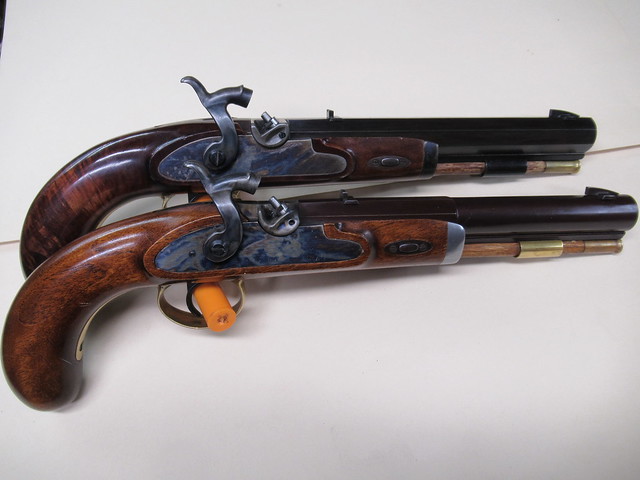Probably should not say, lest I be flamed, and most find 30 grains to be a good load, but in my .50" I find that up to 60-65 grains is still very accurate, with patched round ball or the "PA" bullet, but that is about my limit for recoil. I have fired it with 70 grains, but yeah, it requires such a death-grip that it's hard to get a steady hold for good aim. About the same as a .44 mag with 60-65 grains. The reason I fire that heavy of a load is that when calling cougar, I like to set my handgun on my right, so that if (and when) a cougar comes in from behind and to my right, I can shoot it better with the pistol (it's going to be close) than trying to swing around to my right with the rifle. Too much movement which will spook the kitty cat.
Now, on heavy charges, let me defend myself. Some will say the mfg's max load is 35 (?) grains, and such a charge will blow the gun up. However, the breech and barrel on the Plains Pistol is the same as the rifle.
The other comment is that such loads can crack the stock. Somewhat true. But this usually results from not having a gap between the bolster and the lock plate, in which case the barrel will drive the lock plate back, and the bolt holding the lock plate will tend to split the wood. I think that the mfg holds the load down because of the chance of the stock breaking, and people getting banged on the head when the pistol comes back in recoil. Recoil IS stout with heavy loads, and it recoils differently from a large bore, modern revolver.
Having said all that, and blown all that hot air, 30-40 grains makes a nice handling, accurate, and powerful load. For shooting big kitty cats at short range, I want as much power as I can manage/shoot accurately. The pic at the top of this thread was shot with 65 grain loads.






 IMG_0249
IMG_0249


